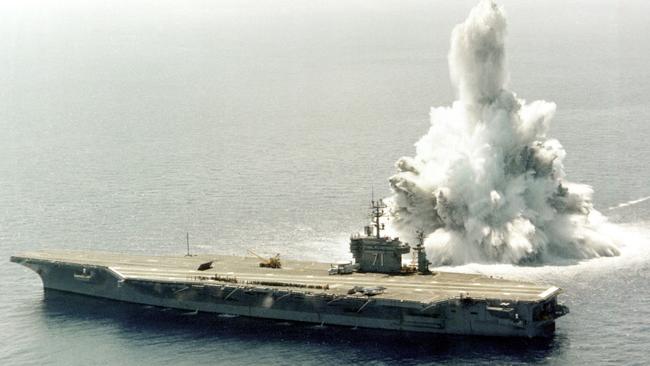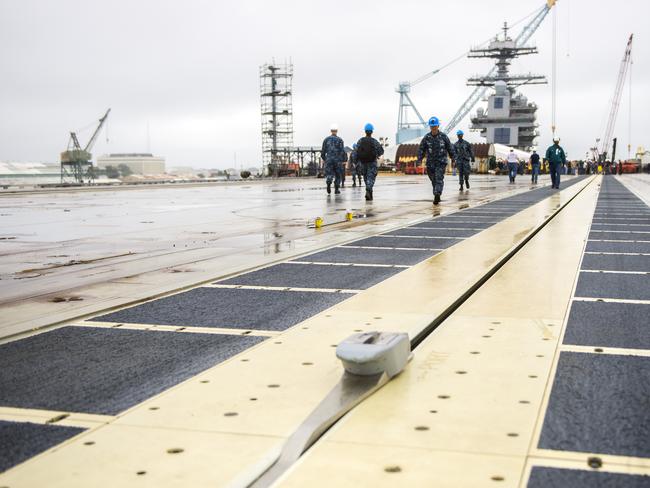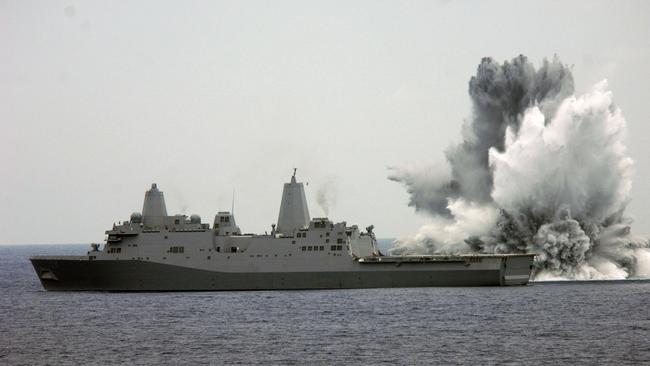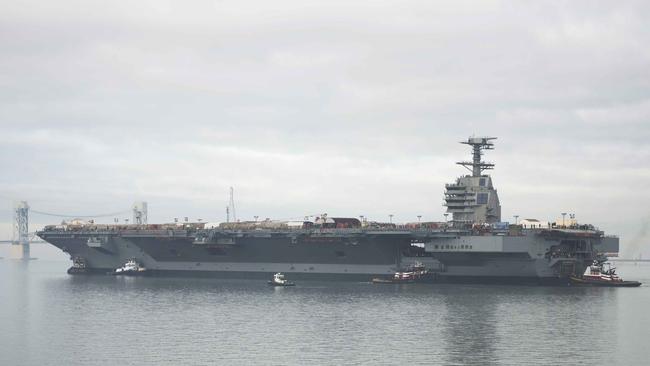US Navy ordered to conduct battle damage test of its new $17 billion aircraft carrier
THE US Navy has been ordered to explode a bomb alongside its biggest and most expensive warship yet. So why is it so reluctant to put a $17 billion carrier to the test?
THE US Navy has been ordered to shock-test its biggest and most expensive warship yet. So why is it so reluctant to put a $17 billion aircraft carrier to the test?
The Pentagon has overruled US Navy objections and ordered it to detonate a huge underwater explosive charge alongside its prototype next-generation aircraft carrier, the USS Gerald R. Ford.
The navy, however, says such an extreme examination of the ship — a test applied to almost all ‘first of class’ vessels — is not necessary.
The 100,000 ton ship has had all its components individually tested, it’s designed to resist the shocks of combat — and the effects of such a blast have been fully computer simulated
Conducting the practical test would simply delay the deployment of the much-needed vessel by up to six months, the navy argues.
But the Pentagon appears to have picked up on a weakness exposed elsewhere in the ship’s construction program: Computer simulation.

Virtual reality
The ship, designated CVN 78 and intended to operate up to 90 aircraft, integrates several new cutting edge technologies under what has since been declared a failed policy of ‘concurrency’.
This is where computer simulations were considered enough to build the ship around a massive new electromagnetic rail system intended to catapult aircraft into the air — even though it had not been fully tested.
Such simulations were also considered sufficient to add to the ship a complex new arrangement of hydraulics and wires designed to safely restrain landing aircraft — even though it had not been fully tested.
The computer said the vital but complex components would be fine.

Practical tests — including those in front of assembled media — suggest otherwise.
RELATED: Icebergs ahead for aircraft carrier projects
Both systems have reportedly been recording unacceptably high and potentially fatal failure rates. Urgent, expensive fix programs have since been initiated but may yet delay the ship’s scheduled deployment.
Thus the renewed desire for practical experience when it comes to battle damage.
A physical blast test would “ensure the survivability of the CVN 78 design is understood prior to beginning operational deployments,” the US undersecretary for acquisition wrote.

Shocking revelations
Detonating bombs alongside warships is nothing new. It’s safe. The 2600-strong crew will be aboard the ship. It’s not designed to damage anything.
But it’s a well established technique for testing how a ship’s structure and components responds to whiplash.
From this the effects of closer, more severe explosions can be extrapolated and weaknesses identified.
But the US Navy believe such lessons are insignificant when placed against its need for a fully operational aircraft carrier.

It has 10 in service at the moment. It says it must have 11 in order to maintain a permanent presence in tense areas such as the Middle East and South East Asia.
The Pentagon disagrees: “ ... impacts on operational deployments did not outweigh the utility of obtaining information about potential vulnerabilities, which could be revealed through testing,” a spokeswoman told Bloomberg.
The cost of installing sensors throughout the vessel, deploying research teams and sending the ship and support vessels to sea for the test is expected to cost in the vicinity of $A106 million, and must take place before September 30, 2017.




